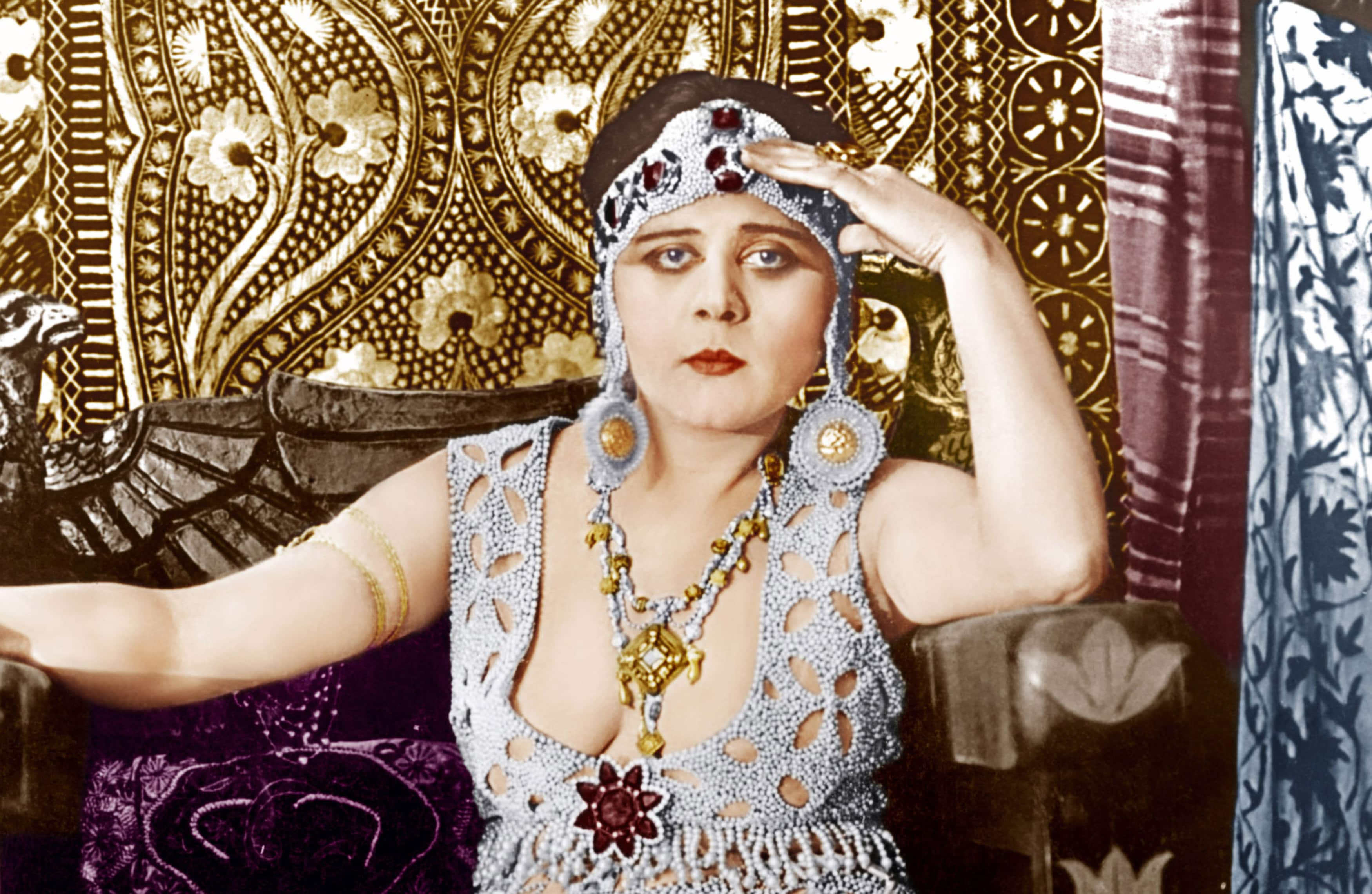Theda Bara

About
Biography
Filmography
Family & Companions
Bibliography
Notes
Publicity claimed that Bara was born in the Sahara Desert, that "Theda" (an abbreviation of Theodosia) was "chosen" because it was an anagram of "death" and that "Bara" (a maternal grandfather's family name) was "Arab" spelled backwards. She actually played several non-vamp roles to critical acclaim, such as "The Two Orphans," "Kathleen Mavourneen" and "Under Two Flags."
Biography
Voluptuous, kohl-eyed silent star whose fabricated exotic (and erotic) "vamp" persona was an early product of the movie industry's publicity machine. As the screen's premiere femme fatale, a vampire who ruined men and tossed them aside, Bara introduced the word "vamp" to the vocabulary and the title card "Kiss me, my fool" from one of her films became a popular phrase of the period.
The Ohio native dropped out of college and spent nearly a decade (1905-1914) struggling as an actress in New York and in touring companies throughout the US. Finally discovered by director Frank Powell, she starred in "A Fool There Was" in early 1915 and became an instant sensation. Though not the first screen vampire, she became the best-known and built the fortunes of her studio, the newly-founded Fox Film Corporation. Frequently photgraphed with snakes and skulls, Bara represented the essence of evil sexuality on screen and maintained her machine-made exoticism off screen as well. Second only to Chaplin and Pickford in popularity during the WWI period, Bara was picked apart by critics, who either proclaimed her the greatest actress of her age or the worst.
Bara had starred in over 40 films and was earning $4,000 a week by 1919, but was unhappy with her studio's reluctance to cast her in non-vamp roles. The failure of her non-vamp "Kathleen Mavourneen" helped end her reign at Fox. With her career on the wane she attempted to branch out to the Broadway stage. Her last film role, "Madame Mystery" (1926) required her to burlesque the seductive image that had been taken seriously a decade before. After retiring, she became a popular socialite and hostess in Hollywood, and enjoyed a long, happy marriage to director Charles Brabin, who survived her by two years. Bara's sister, Lori, had a brief vogue as a screenwriter in the 1930s. Sadly, nearly all of Bara's films have been lost--her 1917 "Cleopatra" is the most sought-after of the missing silent classics.
Filmography
Cast (Feature Film)
Writer (Feature Film)
Life Events
Family
Companions

Bibliography
Notes
Publicity claimed that Bara was born in the Sahara Desert, that "Theda" (an abbreviation of Theodosia) was "chosen" because it was an anagram of "death" and that "Bara" (a maternal grandfather's family name) was "Arab" spelled backwards. She actually played several non-vamp roles to critical acclaim, such as "The Two Orphans," "Kathleen Mavourneen" and "Under Two Flags."











